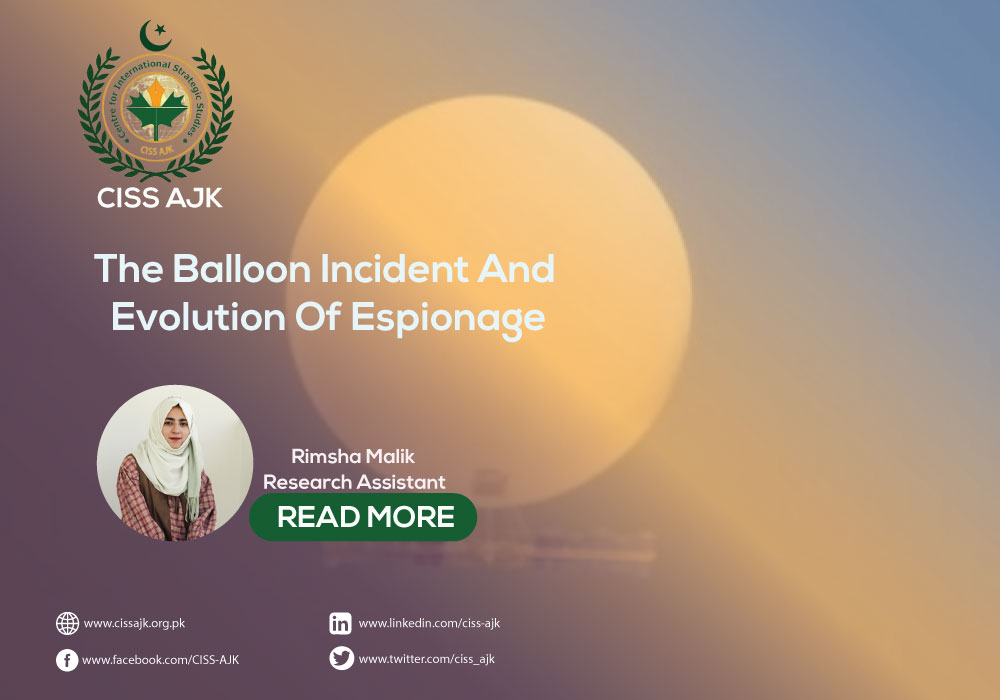753
Espionage, or the practice of gathering information covertly, has been around for thousands of years. However, it has evolved significantly over time, particularly with the advent of new technologies that have made it easier to gather and transmit information. Balloons have been one such technology that has been used in espionage. One of the earliest known uses of balloons in espionage occurred during the Napoleonic Wars in the early 19th century. French balloonist François Arban used a hot air balloon to conduct aerial reconnaissance of enemy positions, allowing French troops to better plan their attacks. This was one of the first instances of aerial reconnaissance being used in warfare.
During World War I, both the Allies and the Central Powers used balloons for aerial reconnaissance. The balloons were tethered to the ground and used to observe enemy troop movements and artillery positions. However, they were also vulnerable to attack, and many balloonists were killed by enemy fire.
In the Cold War era, balloons were used by both the United States and the Soviet Union for espionage purposes. The US used balloons to conduct surveillance of the Soviet Union, particularly in the early days of the Cold War before satellite technology was widely available. The most well-known of these balloon programs was the Project Mogul, which was a top-secret US government program that used high-altitude balloons to detect sound waves from potential Soviet nuclear tests. In the Soviet Union, balloons were used to transport spies and equipment across borders. For example, during the 1960s, the KGB used balloons to transport agents and equipment across the Iron Curtain into West Germany.
The United States shot down a Chinese spy balloon earlier this month after it had flown over a significant portion of North America. America has been mesmerized by the case of Chinese surveillance balloons and mysterious objects circling the country’s skies for several weeks. Some of these items are still unknown in terms of their origin and use. Yet regardless of how they end out, they have already set up a crisis in ties between the United States and China. The possibility that Chinese balloons may be spying on key military facilities has received the majority of attention and worry. Nevertheless, there is a more disturbing, more painful reason why covert high-altitude balloon flights are so unsettling: they have been used to attack America in the past, and they very well may do so again. This sordid past serves as another evidence of the urgent need for both the United States and China to reduce tensions, particularly in the area of aviation.
Only 9,000 high-altitude balloons fired from Japan during World War II were used to launch successful, widespread attacks on the American mainland. Japan’s Fu-Go balloons used the same jet stream winds that carried China’s surveillance balloons over America to deliver a small explosive payload deep into the heart of the country. Just modest damage and regrettably a few deaths were brought on by these balloon explosives. But, the U.S. administration was concerned that they may spread panic and lower morale, so they banned mention of the bizarre new weapon, which is one of the reasons they’ve been virtually forgotten. The leaders of China and the United States can learn three crucial lessons from the past of the Fu-Go balloons as they handle the current issue.
First of all, despite the fact that they pose no direct threat to national security, invisible, high-altitude objects raise panic levels that are unjustified. The military utility of China’s spy balloons appears to be negligible, similar to the Fu-Go balloons. Nonetheless, it’s difficult to overstate how they affected the general public’s perspective and concern.
The second thing to learn is that balloons make surprisingly sneaky weapons. It took US investigators several months to put Japan’s balloon bomb operation together. China’s high-altitude balloons, on the other hand, seem to have taken advantage of what a senior Air Force officer called a “domain awareness gap,” passing through gaps in American air defense. Such gaps are particularly alarming if, like in the 1940s, they open up fresh entry points for enemies to strike American territory. Furthermore, The Fu-Go balloons taught us that crisis and conflict can be transformed into cooperation and the story of the Fu-Go balloon bombs had a happy ending due to the actions of individual Americans and Japanese who worked to transform wartime tragedy into postwar partnership. We must hope that the most recent crisis in U.S.-China relations resolves similarly.
Regardless of the differences between the two countries, leaders in Beijing and Washington must create the conditions for this exchange to flourish. For its part, China needs to start by avoiding any more airborne intrusions into American airspace. The history of the Fu-Go balloons most importantly demonstrates that nations must use people-to-people interactions to better anchor their troubled relationship when tensions are as high as they are between the United States and China — or risk causing the world to experience much greater instability.



